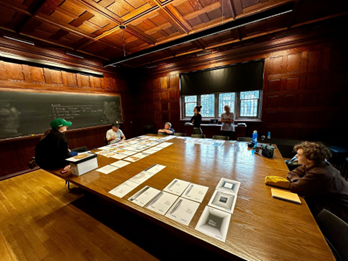Prof. Levin leads Workshop with German Graduate Design Students on the Princeton Phono-Post Archive
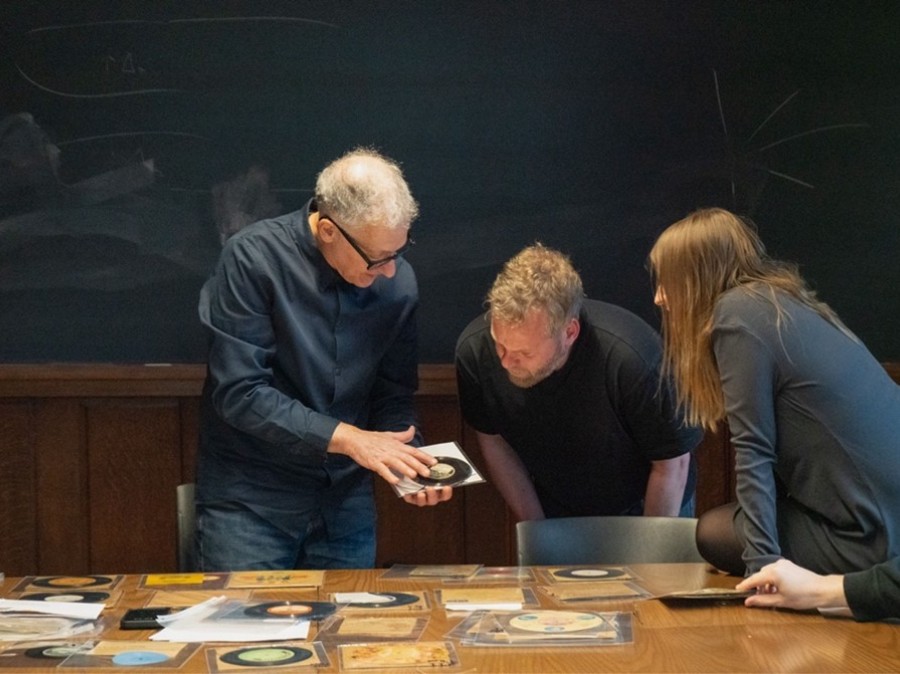
Prof. Thomas Levin demonstrating voice recorded medium at workshop in March 2025
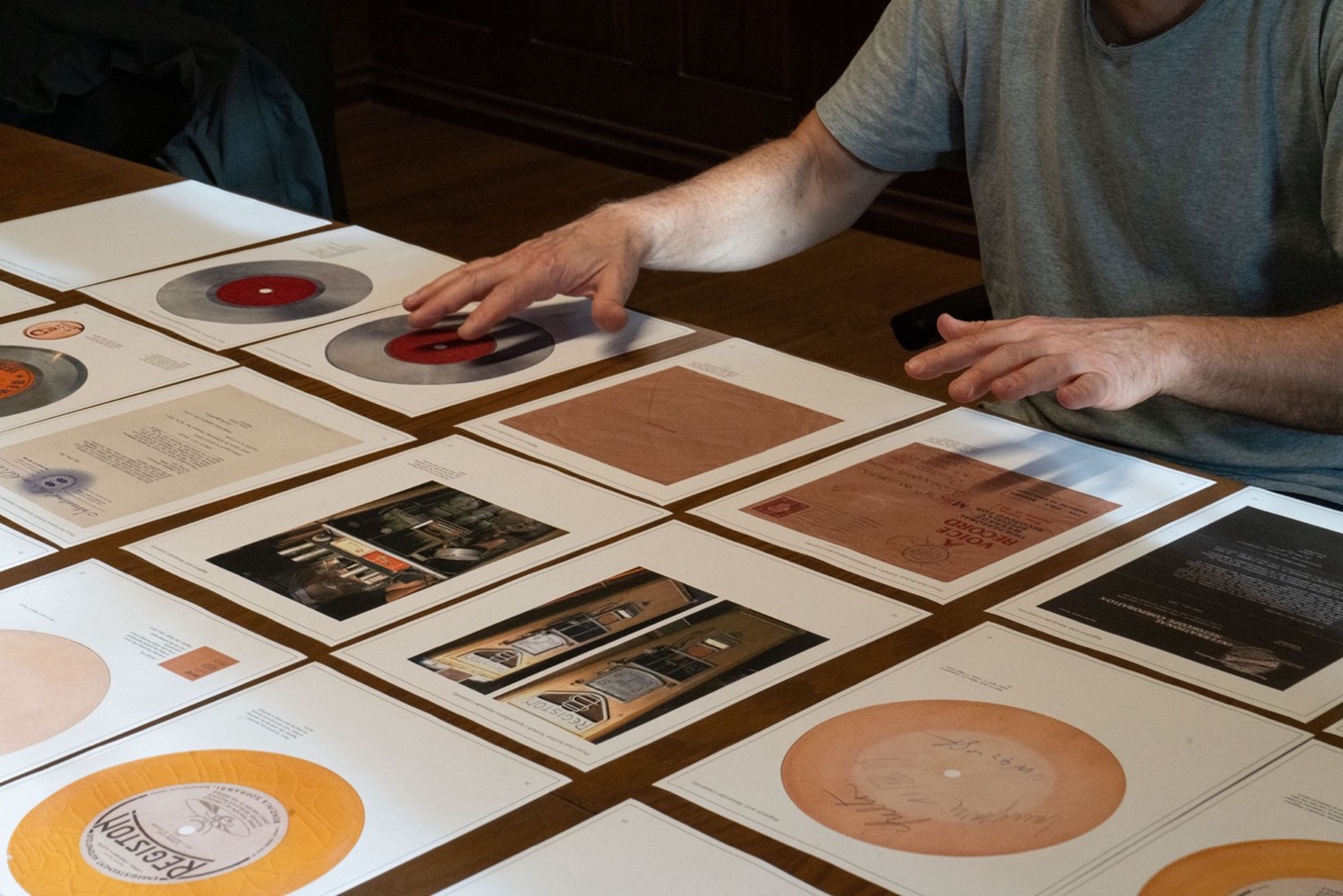
Prof. Tom Levin interrupted his year-long sabbatical leave in Rio de Janeiro to return to campus for a week-long workshop in late March with a group of graduate students from the Faculty of Design (“Gestaltung”) at HAWK University of Applied Sciences and Arts in Hildesheim, Germany. The gathering was the culmination of a year-long seminar/studio taught by Prof. Konstantin Haensch, a former graduate student in the German Department, entitled “Forschung in/und Gestaltung” which focused on the Princeton Phono-Post Archive, a unique collection of thousands of small gramophone records that contain spoken messages recorded and then sent through the mail. This archive of what Prof. Levin calls the media archaeology of voice mail is one of the major outgrowths of a long-term research project which he has been directing since 2011. One can get sense of the scope of the undertaking from this short documentary or from this even shorter Instagram teaser to a recent feature about the archive in National Geographic Magazine.
Together with Profs. Levin and Haensch, graduate students Martin Gnadt, Lucius Märtner, Josefine Naß, and Ina Szczepanski spent the week carefully studying a range of materials from the archive both in Levin’s East Pyne office and in a display vitrine in the Friend Center that features a selection from Levin’s collection of technologies of personal gramophonic recording. Over the course of five long days of intensive and joyous collaboration, the group developed the design, layout, and organizational logic of what will be a series of forthcoming publications devoted to different aspects of the archive, with the working title Princeton Tonhefte: Materials from the Princeton Phono-Post Archive.
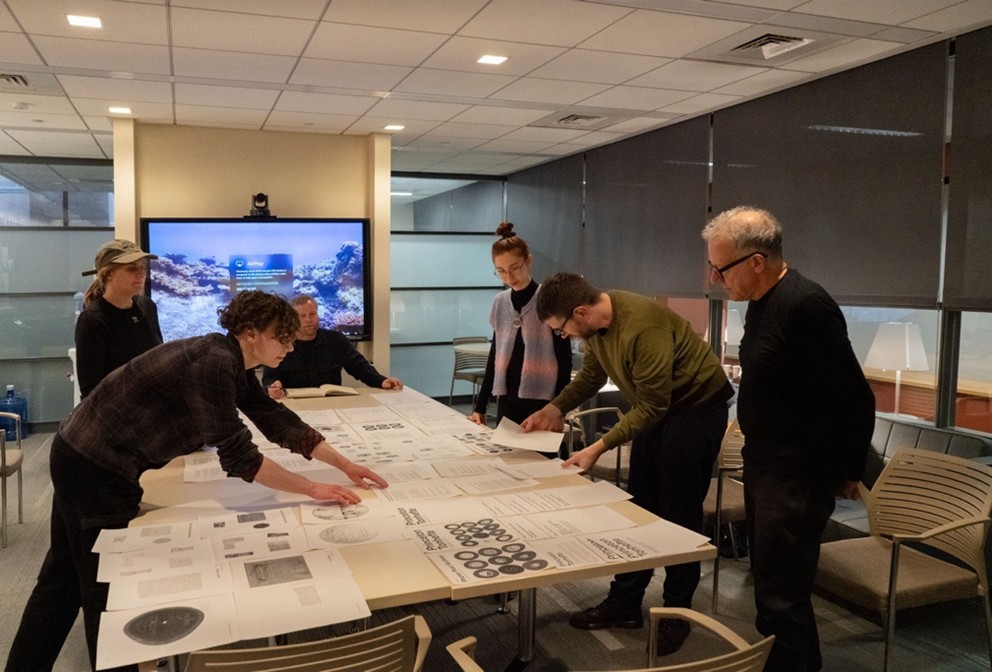
Building on the seminar work in Hildesheim, the group forged a methodology that rendered the archive’s complexity as a set of interlocking layers. First, primary artifacts such as Phono-Post records and mailers were assembled on the seminar table alongside related secondary materials – handwritten letters, technical literature, advertisements, contextual objects, playback devices –allowing their ever-shifting constellations to spark new research questions. In a second phase, the group focused on an object layer consisting of historically informed close readings of each artifact’s materiality. This then gave rise to a third layer, in the spirit of an open archive, which took the form of a publication series that will invite scholars and collectors to contribute analyses as well as additional media objects to the Princeton Phono-Post Archive.
As part of a parallel project, student Annekathrin Kirchner employed a special panoramic camera to capture a series of high-resolution images of the archive which will then be stitched together seamlessly in software to create large-format photographs, each composite built from roughly six to fifteen individual exposures.
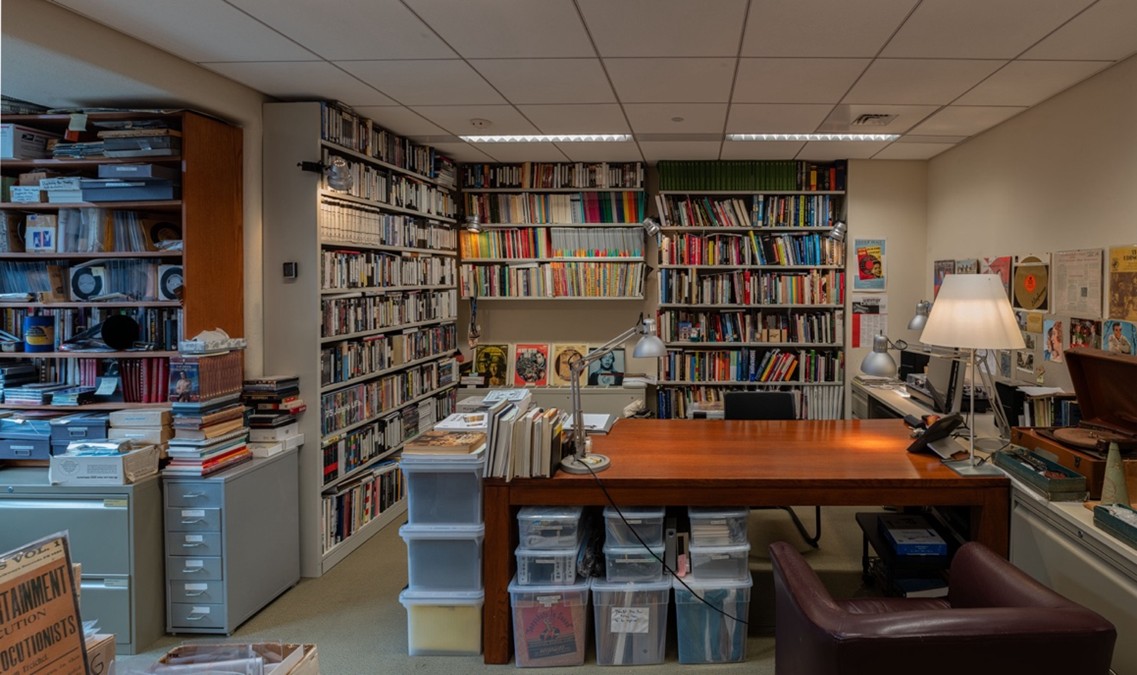
The team plans to continue their work during the coming months, refining the publication series and deepening the archive’s reach while welcoming new collaborators and materials that will assure that the Princeton Phono-Post Archive remains a vital, expanding resource for media-archaeological research.
